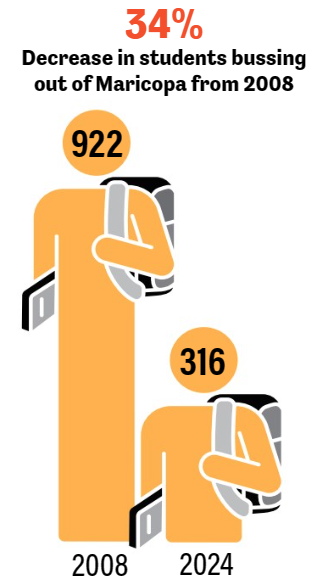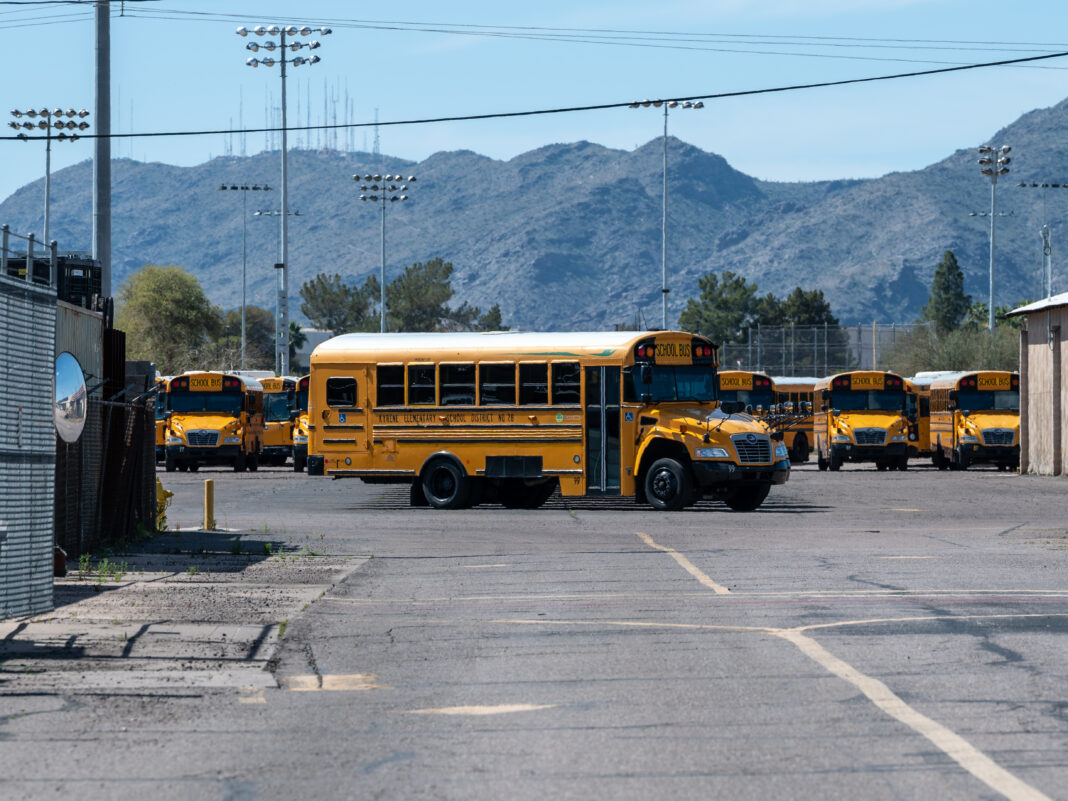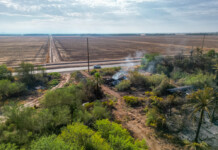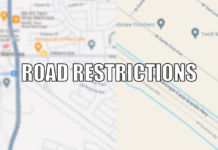Senita resident Stephanie Fulton is just fine with her daughter taking a school bus 45 minutes up to Tempe Union High School District to get an education.
Fulton’s daughter, an 11th grader, left Maricopa Unified School District five years ago after she matriculated from Butterfield Elementary School. She continued her middle school education at Kyrene School District before graduating to attend high school at Mountain Pointe High School.
“The reason we sent her to Kyrene was because she wasn’t feeling challenged enough,” Fulton said. “Now, high school seems to be going great for her.”
Fulton said the experience of busing her student more than 20 miles each way has been “entirely positive” with “buses on time” in traffic or not.
Rancho El Dorado resident Bethany Anguiano moved her family to Maricopa in 2009. For her, KSD appealed because it’s a Spanish language-dominated district, unlike Maricopa.
“My husband is from Mexico and I speak Spanish fluently, but we somehow didn’t teach our kids any Spanish,” Anguiano said. “We heard about a school in the Kyrene School District that has the dual language program, and we knew we wanted that for our kids, and we have sent all four of our kids there.”
Anguiano said after elementary school, she and her husband brought their kids back to MUSD to be closer to home.
“I’m not super impressed with the middle school or high school here, but it’s OK,” she said.
Block busser
It is Maricopa parents such as Fulton and Anguiano who for various reasons bus their kids outside MUSD.
Since the early 1990s, Arizona’s open enrollment law has allowed students to attend public schools outside the districts in which they live.
That’s not the case in more than half of states, according to the National Center for Education Statistics.
Both KSD and TUHSD not only enroll children from MUSD but send buses to the city to transport kids to them.
Kyrene and Tempe school districts together bus 316 students out of MUSD, according to the latest count. In 2008, there were considerably more students being bused out of MUSD – 922.
KSD spokesperson Erin Helm said her district enrolls about 300 students living inside MUSD.
Five buses transport an estimated 170 of those Maricopa students to four Kyrene schools. The rest get their own rides.
“There has been a decrease over time,” Helm said. “Kyrene transports fewer Maricopa children today than in the past.”
Helm said Kyrene began providing buses about 20 years ago to meet the needs of families who lived in Maricopa.
“Like many districts across the state and the nation, Kyrene is facing enrollment decline due to low birth rates and an aging population,” Helm said. “Some families from outside of our boundaries choose Kyrene, and some families from within our boundaries choose other school districts. But the overall decline in enrollment is a consistent story across the country.”
TUHSD has three bus routes based out of Mountain Pointe High School that serve Maricopa with 12 bus stops, said district spokesperson Megan Sterling.
“We average 146 students per day on these routes,” Sterling said. “We also provide a late bus that runs on Tuesday and Thursday afternoons to support after-school tutoring.”
Sterling said enrollment among Maricopa students has declined, but she did not know by how many. She said 356 students from Maricopa are just a tiny fraction of the total school district enrollment of 12,488.

MUSD retains students well
While open enrollment has been a hot-button issue in the past at MUSD, district officials today see it in a more positive light that affects the district less and less. Many of the concerns of the past surrounded government funding lost by MUSD as students rolled away in long yellow buses.
When funding at the state, local and federal levels are combined, the average Arizona K-12 student has an estimated $14,673 allocated toward them in fiscal year 2024. In 2015, the funding per student was figured much lower at $9,124.
“School choice fosters healthy competition among schools to improve quality and give families a broad range of academic and extracurricular opportunities to meet their individual preferences,” MUSD spokesperson Mishell Terry said. “We understand that parental decisions about a child’s education are a deeply personal choice. While we stand behind our broad range of educational pathways, we recognize the diverse needs of our community. Geography is no longer the deciding factor when parents choose where to educate their children. This underscores the importance of competitive programming.”
Terry said MUSD “consistently expands course offerings and specialty programs to provide personalized education.
“In the last five years, we’ve broadened career and technical education options, introduced a dual language track for preschool to second grade, initiated an accelerated program for kindergarten and first-grade students, opened a second high school, launched Maricopa Virtual Academy for online instruction, and implemented a number of other athletic and extracurricular activities. As a result, our capture rate of school-age children residing in Maricopa continues to grow.”
Indeed, MUSD leaders and administrators were recently informed by a consultant that although district enrollment has slowed, it is expected to grow as more and more housing subdivisions raise residential walls and roofs in and around Maricopa.
In late December, MUSD governing board members learned the district was experiencing slower but substantial housing and school-aged population growth.
 “A slightly larger portion of the increase” was offset this year by charter schools and other alternative education options, according to an expert who addressed the school board.
“A slightly larger portion of the increase” was offset this year by charter schools and other alternative education options, according to an expert who addressed the school board.
But it all could change in a month, a year or several years, said Rick Brammer, principal at Applied Economics LLC.
Although enrollment took a slide during the Great Recession from 2007 to 2010, since 2011, enrollment has grown by 70%.
“One thing about Maricopa is it changes every day,” Brammer said, presenting his report to the school board. “If it didn’t look like it today, then it might look like that tomorrow.”


















